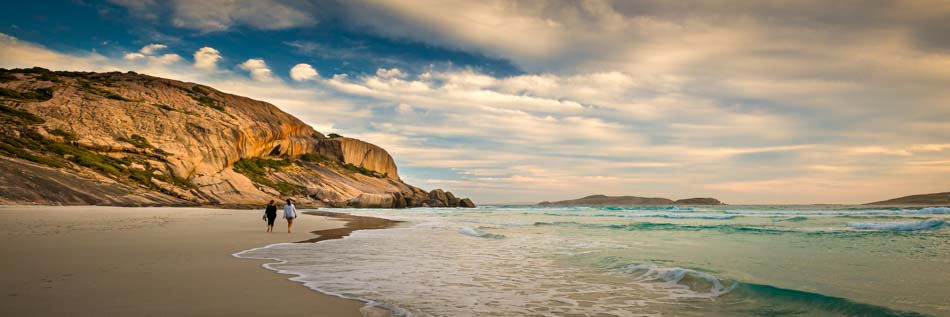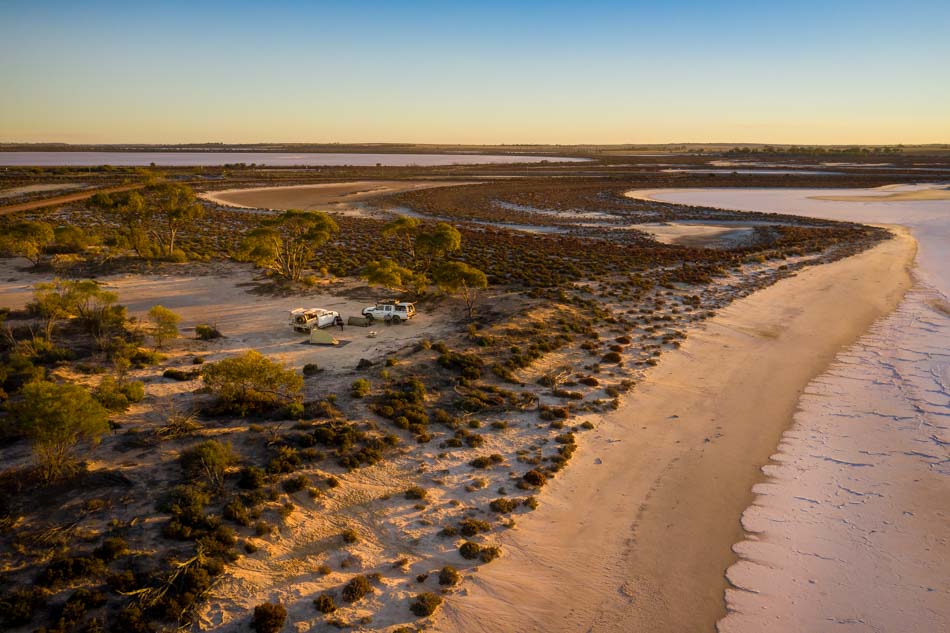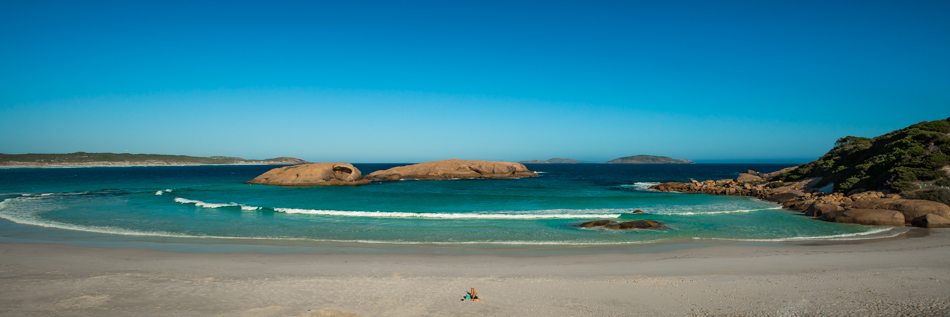You are standing in front of a beautiful vista to shoot. Adding a Human Element can be tempting. However, what should you keep in mind before you introduce a person to your scene?
Adding a Human Element can distract the viewer’s eye away from the main subject. In addition, having people in the shot can change the story you’re capturing as it becomes more about the interaction of a person with the landscape rather than about the landscape itself.
What is a Human Element in Landscape Photography?
A Human Element is when one or more people appear in a landscape scene or any evidence of people present in the location, like clothing, a backpack, a footstep, or a vehicle.
For the purists who want to capture the natural world, this definition could extend to anything that didn’t naturally occur in the environment, like jetties, boardwalks, tracks, signs, etc. However, in today’s modern world, this can be a challenge.
While there are plenty of websites that discuss the benefits of adding a Human Element into a scene, I want to explore the other side. Therefore, this article will highlight some of the negative impacts of introducing a person into your landscape photo.

Reasons to avoid including a Human Element in your Landscape Image
I’m not totally against adding a human element into a landscape photo, but as you’ll see from the points below, there are some arguments as to why you should consider if it’s a good move in your next landscape.
Reason #1 – A Person Can be Distracting
Adding a person to a landscape image can often be distracting. We are social beings. Other humans will naturally draw our eyes. So our attention will go straight to people’s faces or body shapes.
This effect is why adding a person into a landscape photo can provide more interest in the shot. However, the presence of people can divert our attention away from other elements in the frame.
In some scenes, the presence of a person in the photo is in direct competition with the main subject. As a result, they reduce the overall impact the image has on the viewer from a landscape perspective. More about this later.
The other level of distraction can be the composition. The natural flow of a landscape scene can be impacted by adding an unnatural element, like a person or some evidence of their presence. Like any element included in the frame, consider how it can break the lines and pathways you set up in the image.
Reason #2 – Less Landscape more Travel Photography
The goal of many landscape photographers is to capture the beauty of the natural world. Therefore, the story is that of the natural landscape, so by definition, the scene does not include any Human Elements.
The moment you include people or any evidence of the presence of people in the scene, the story changes.
A story of the landscape is essentially the elements in a scene and how they interact with each other. The narrative captured in a photo shares the natural beauty that the photographer witnessed. The moment you include people or any evidence of the presence of people in the scene, the story changes.
This shift occurs because the story is no longer about the interaction of the elements in the scene. Instead, it’s about the person’s presence in the landscape. For this reason, images with people or Human Elements reflect more of a travel photography style rather than landscape photography.
No matter how prominent the person appears in the picture, the viewer will more easily connect to the person in the frame, not the landscape.

Reason #3 – You are impacting the scene
Each landscape photographer has an approach to discovering, capturing, and creating their images of the landscape. That approach extends to manipulating how they the image in post-processing. Plus, the extent to which the photographer is prepared to impact the scene. Probably a topic for another article.
Here’s my approach.
I like to capture landscapes the way I found the location and how others would find it.
This simple rule covers a range of practices like I don’t replace skies, I don’t damage the environment or location, and I don’t stylize a scene just for a better shot.
Included is, I don’t set up a shot, like placing a leaf in front of the camera to create foreground interest. It’s not how I found it. I don’t think it’s much of a leap to placing a person in the frame to create interest.
There is so much more to unpack here, but I’ll cover that in another article. Over time you will find where your gauge sits regarding the extent to which you are prepared to alter the scene to “improve” a landscape shot.
I have known photographers to go to extremes when including a human element in their landscapes, where they place people in precarious positions that could endanger the person. Alternatively, they’ve put people in locations that could cause damage to the environment. But, of course, none of this is worth it just for a better image.
I understand that not everyone has the same approach, and I avoid judgment. However, I do have two hard and fast rules:
- Don’t damage the natural environment just for a better landscape image, and
- Be honest. If you’ve manipulated a scene, either physically or during the edit, own it.
Reason #4 – There are lots of ways to scale
The common excuse given by photographers to justify why they decided to include a person in the scene is “to show a sense of scale.” However, the reality is there are multiple ways to effectively provide scale in your landscape images without adding a person.
Before we discuss that, I want to cover whether providing scale is required. This statement is usually associated with images of mountains or large, ‘epic’ views. The argument is that adding a person to make them look tiny makes the mountain or view look more prominent, but is it necessary? We’ll discuss that in reason #5.
Even if size and scale are needed to help tell a better story, there are a few other ways to do this.

Finding an interesting foreground with elements in the scene is an effective way to show scale. Including a foreground in a landscape photo can bring plenty of other benefits to your shots. Check out this article to learn more about incorporating foregrounds in your landscape pictures.
Reason #5 – It’s Lazy Photography
Capturing stories of the landscape can be challenging, and I think it’s why some photographers use people in their photos. It’s easier to tell a story with a Human Element. However, the story is not about the landscape. Instead, the story is about the person’s experience in the landscape.
I suspect photographers include a human element as an easy way to add interest to their photos, where there was a lack of interest previously. You don’t want to become a lazy photographer.
Telling stories of the landscape requires practice but is so rewarding. Constantly add Human Elements into your scene can prevent you from extending your photography as you stop looking for other ways to show scale or add drama to your photos. In addition, if you’re always adding a person into your pictures, you’re not developing your creativity and storytelling skills.
When I was beginning to get into landscape photography, I fell into the trap of adding people into my shots to help make the photo more engaging. Over time though, I’ve learned to appreciate the hunt for the right scene and the challenge in finding a pleasing composition that works.
It’s important to point out that I’m not against taking images of landscapes and including a human element. I’ve done so in the past and will continue to. However, I don’t refer to them as landscape images. They are more travel pictures. While it’s a bit cliche, it can be lots of fun, and you can get some great photos that share the experience of being in the location.
Can a landscape photo have a person in it?
The moment you add a person into a landscape scene, the story you capture is no longer just about the natural aspects of the location. Instead, the picture is about a person’s interaction with the landscape and their emotion. As a result, the story shifts from being a landscape picture to a travel photo.
Why add a human element into a landscape image?
Adding a human element into a landscape shot introduces interest and drama to the picture. The viewer’s attention is quick drawn to a person present in the image. Depending on their location in the scene, the person can add depth to the photo.
How does adding a Human Element enhance a photo?
A Human Element in a landscape shot creates a focal point for the viewer’s eye. In addition, this technique often introduces a dramatic element as the viewer is processing the landscape and relating to the person’s experience in the location.
